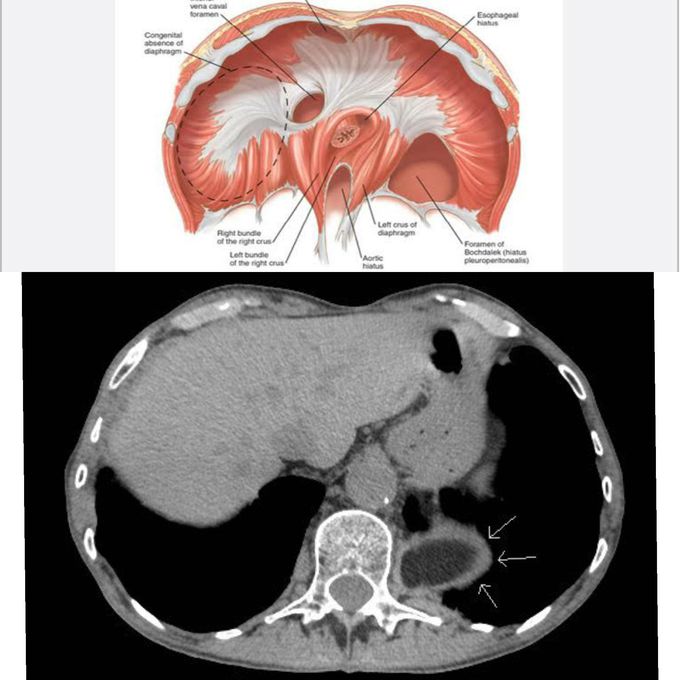


Bochdalek Hernia
A Bochdalek hernia is one of the types of congenital diaphragmatic hernias. Diaphragm develops from 4 components including septum transversum ( central tendon), dorsal mesentery of esophagus (crura of diaphragm), pleuroperitoneal membranes and muscular ingrowth from lateral body walls. Bochdalek hernia is an opening in the posterolateral region of diaphragm due to defective formation and/or fusion of the pleuroperitoneal membranes with the other three parts of the diaphragm. This results in continuity between the pleural and peritoneal cavities. This condition is more common on the left side. If the normal fusion of pleuroperitoneal membranes is impaired during the period when intestines return to the abdomen from the umbilical cord i.e in 10th week of gestation, some viscera may pass into the thorax. This abdominal viscera compresses the heart and lungs. Mortality in these cases results not from the hernia or viscera but due to the hypoplastic lungs which were compressed during their period of development. Such cases are associated with pulmonary hypertension due to decreased vascular cross sectional area. Hypoxia can further cause pulmonary vasoconstriction which may be reversed by inhalation of nitric oxide. Lungs can achieve their normal size after repositioning the abdominal viscera and reparing the diaphragmatic defect. The axial CT of the lung bases shows herniation of abdominal fat contents into the lower posterior left hemithorax through the left hemidiaphragm (arrows). Image via: https://images.app.goo.gl/cm4uH57FK9qNUHi27 https://radiologypics.com/2013/02/05/bochdalek-hernia/amp/


